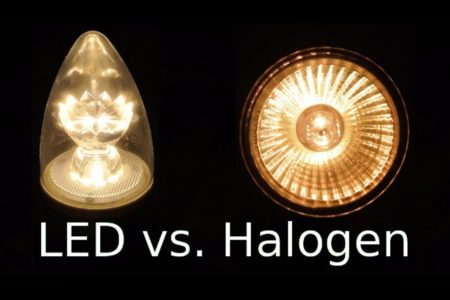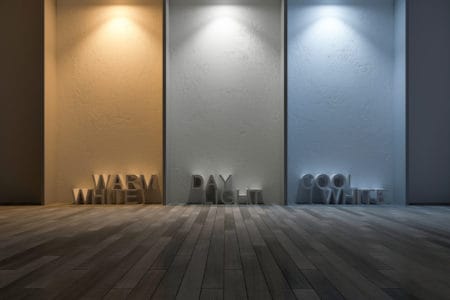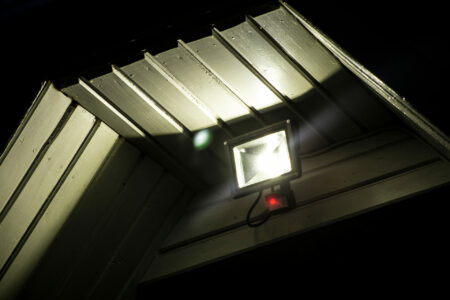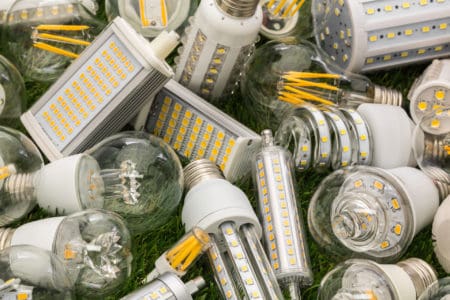What’s the difference between warm white and cool white? It’s always important to choose the most suitable light color for your home, store or office space. When it comes to conventional lamps, people never considered the colors the lamps emit to be relevant. But today, the opposite is true with all the LED lights whose colors are particularly suitable for varying atmospheres and mood of your space.
Read on to explore the differences between warm white and cool white and the reasons they are suitable for different spaces and their impact on a room or area.
Warm White or Cool White Lighting?
When we talk about warm white and cool white lighting we actually mean the so called color temperature. This is not the temperature of the bulb per se, but the light color it emits into the room. The measurement of this color temperature is done in kelvin and ranges between 1500K and 6500K. The lower the kelvin, the more the appearance looks yellow. The higher the kelvin, the whiter the light.
To describe the color temperature of a light bulb, lighting companies mostly employ the following terms:
- warm white
- cool white
- day light
Are you one of those who dislike certain light colors for being too yellow and dim or too harsh and clinical? Well, remember that not all lights color are suitable for every space. So, if you’ve an open mind that will help you choose the right white lighting for all the rooms in your house, store and landscape.
Warm White Lighting
Warm white light bulbs mostly come with 2700K to 3000K. They produce a cozy yellow light that is very close to that of a candlelight. This warm white is great for illuminating any room to create a comfortable ambience. With such a pleasant and inviting environment, your bedroom or living room becomes a perfect space to relax and enjoy your time at home.
Even people who previously disliked warm white have always wanted more after trying it in the right areas. Also, when set up in the more traditional applications, a warm white color temperature fits perfectly if you aim to create character and depth. A good example is in wedding venues since warm white light is excellent for creating a romantic atmosphere.
Here are some of the most suitable spaces that warm white light fits perfectly:
- Living rooms
- Bedrooms
- Dining Rooms
- Entries & Hallways
- Restaurants
- Weddings
- Traditional Applications
If you’re not sure of which color temperature to pick, going for cool white lighting of 4000K would be a smart idea since it offers the best of both worlds. Areas that are most suitable for cool white lighting are those that need more brightness and a feeling of liveliness.
Such brightness is great in areas like bathrooms and garages as they require much brighter and clearer lighting for good visibility. That’s the brightness you need for shaving, apply makeup or locating a missing screw.
Cool White Lighting
On the other end of the kelvin scale we have cool white light bulbs which come with 5300K or more. They produce a very bright and white light color. If you’re so much into cool white lights that you don’t mind installing them everywhere in your home, we advise that you to install them with a dimmer.
That will help to reduce the brightness and the resulting harshness of cool white lights. If you want to create an atmosphere that turns your place into a modern and clean environment, cool white bulbs would be the right choice for you.
Check out areas that suit cool white lighting the most:
- Bathrooms
- Kitchens
- Study rooms
- Toilets
- Garages
- Laundries
- Commercial Applications
These are not the typical spaces where you want to relax in a calm atmosphere so warm white lights won’t fit very well here. In these areas a bright and clean lighting is highly appreciated.
Warm or Cool White for Your Home?
Now you know the main difference between warm and cool white light bulbs. But there are some more factors when choosing the right light color for your home. Warm white lighting creates a totally different mood and atmosphere than cool white light. It also can have an impact on your sleep pattern.
The question is, do you know the different areas that are best suited for either warm white or cool white lighting? Here is a guide that will help you to make a perfect lighting plan for your home:
Living Room
A living room is good for cool white lighting as the bright light will boost mental concentration, increase a sense of transparency and make visibility much clearer. You can as well make the space a little warmer and add in some variety by including a warm-white floor lamp.
Also, it can be challenging to create extra space if your living room doesn’t have more than one main lamp. To get an ideal solution, you would have to install a recessed ceiling that carries light troughs.
Bedroom
Going for warm white lighting with a lower color temperature between 2700K and 3000K for your bedroom is ideal. The reason is that cool white light discourages your sleepy hormone and melatonin from secreting as required. It also hinders the circadian rhythm our body follows and messes up our sleep.
You deserve to stay in an atmosphere of warmth and comfort while in your bedroom. Remember, it’s a space of calm and rest that helps you to build up your strength after a busy day. If for any reason you’ve turned your bedroom into a study room, consider installing lights that have a color temperature range of 3000 to 4000K.
To make it much easy, buying a table lamp for studying purposes can be a smart and cost-effect alternative solution.
Kitchen
Cooking is a pretty busy activity that involves a lot of concentration and the need for clearer visibility. This implies that cool white lights fit perfectly into a kitchen environment. Home kitchens like restaurant kitchens always have bright lights. The use of knives, fire, silverware that must be clean, foodstuff and multiple spices can only be handled correctly in bright lighting.
The importance of proper hygiene is another reason every kitchen needs a higher color temperature of 4000 – 6000K for optimum lighting. Good lighting creates a better condition for effective cleaning as well as spotting any dirt or stains in the kitchen. Generally, cool white lighting makes you keep the kitchen cleaner.
Additionally, interior designers suggest that the space below the cupboard and countertop can both be a great spot to install spotlights. This adds beauty and a condition of feeling safe in your kitchen.
At the dining, warm white lights are great, no matter how close your dining room or area is to the living room lighting. Such light (3000K) causes the color of food to increase in saturation, raising appetite levels. If you never knew, now you know the reason classy restaurants place either a warm white lamp or candle on their dining tables.
Study Room
A study room needs no other lighting than bright lighting with a color temperature between 4000 and 6000K. Besides, the angle you position your study-room cool white light is very important. Avoid mistakes like installing lighting in a position that a sit or other furniture would obstruct and throw shadows on your study material. Your reading should be comfortable and without any eye strain, which can make you easily tired.
Finding table lamps for reading and studying is not difficult. You can still add light troughs to your ceiling if you need to improve the brightness even more.
Bathroom
The right lighting is one of the reasons your bathroom is also a great space to relax and chill out. So, a color temperature of not more than 4000K is ideal for bathroom lighting. However, this logic is not very applicable, as people often install cool white lights instead. They do that for the sake of safety since without seeing clearly, one can slide and fall.
Considering that using a bathroom for relaxation is a very essential part of having a fulfilling time at home, you can reconcile this clash between safety and relaxation. Simply consider installing extra light (cool white) close to the washing basin and bathtub.
Outdoor Lighting
Outdoor lighting is a game-changer when it comes turning your landscaping into a captivating scenery. Whether your choice is warm white or cool white warm, it should always depend on what you’re are highlighting in your landscaping.
If you plan to highlight architectural features, go for a light that ranges from 2500K to 2700K. But if it’s about accentuating plants, pick 3000 to 4000K. The way you would like people to feel when they see your illuminated home or business should also play a major role. You may want to stick with warm and natural white lighting, unlike the unnatural cooler color temperatures.
Conclusion
As the bottom line the choice of your light colors, for the most part, is a personal preference. Some people just love and feel great in cool white lighting wherever it is installed. Others feel the same about warm white lights. Some also think lighting is just lighting and don’t see the beauty or feel the atmosphere around it.
Another thing worth considering is the climate where you live. Living in a hotter and more humid environment means cooler light temperatures can be a great way to create a cooler ambience around your house. And for those in cooler climates, setting warmer light colors can help to create a calmer feeling in your home.






